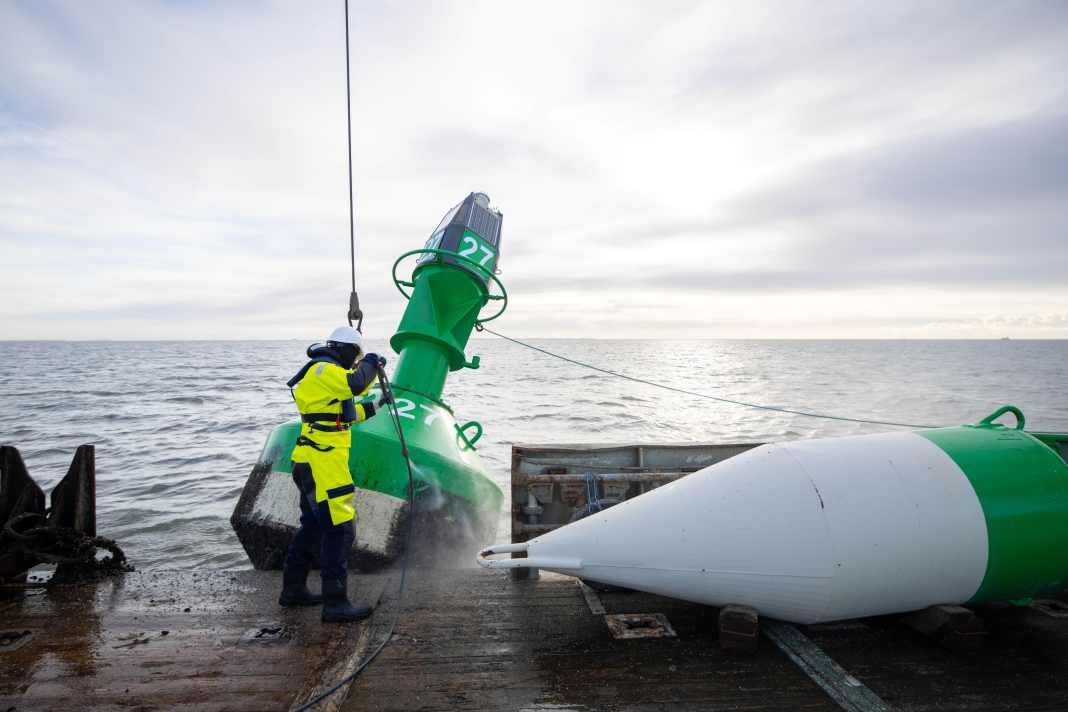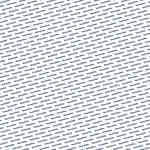


The replacement of summer buoyage with winter buoyage is carried out in order to minimise losses and damage caused by unfavourable weather conditions and, in particular, ice drift. The annual changeover is part of the maritime safety measures and is recognised as a Notice to Mariners (BfS) published. Skippers should familiarise themselves with the changes, as the winter buoyage differs from the summer buoyage shown on the nautical charts.special features of the winter buoyage
When winter sets in, numerous navigation signs are replaced by smaller, more robust buoys, known as ice buoys. Individual navigation signs, especially in secondary waterways, are completely withdrawn without replacement. The scheduled winter buoys displayed after these measures are taken still provide shipping with sufficient guidance for safe navigation.
Nevertheless, skippers must take into account the increased risk of buoys being displaced and the possible extinguishing of light buoys in the stormy winds that often occur at this time of year. The colours of the winter sea marks correspond to those of the summer sea marks, but the shapes of the buoys can sometimes differ. In some areas, so-called drift blocks are used in winter - small cylindrical or conical truncated buoys.
Additional measures in case of ice hazard
The onset of ice hazard necessitates further measures and, above all, forces the retraction of most light buoys. As a general rule, all but a few top signs are removed without prior notice when there is a risk of ice.
In the event of heavy ice, it must be expected that the floating navigation signs that are not retracted will also be damaged or displaced to a greater extent. The paint on the buoys is quickly rubbed off and the buoys can be displaced over long distances, pushed under ice or caused to sink.
The traffic centres broadcast important information on VHF about the ice hazard and its effects on the designation of the respective areas, including information about the retraction, displacement and re-deployment of floating navigation signs.
Navigation under winter conditions
Particular caution is required in winter conditions. The safest way to navigate is with the help of a pilot, whereby fixed navigation signs should be used to determine the location.
Since only the summer buoyage is shown in the German nautical charts, the BSH publication indicates the changes that result from the implementation of the winter measures compared to the summer buoyage - both when winter sets in (replacement of the summer buoyage with the winter buoyage) and when the danger of ice occurs.
The buoy-laying vessels are constantly on standby to restore the buoyage as quickly as possible, but after heavy ice it can take a long time for the scheduled winter buoyage to be fully restored.
Obligation to report irregularities
Notifications of displacement, damage or missing navigation signs in German waters must be sent to the nearest traffic centre or to the maritime warning service in Emden. This prompt communication is crucial for the safety of all vessels in the affected areas.
By reporting irregularities, the responsible authorities can react quickly and warn other road users. Particularly in the winter months, when buoyage is reduced anyway and weather conditions make navigation difficult, cooperation between skippers and the authorities is of great importance for safety at sea.
Any information to complete or correct the nautical publications will serve the safety of all mariners. The Federal Maritime and Hydrographic Agency requests contributions to be sent to Division N2 Neptunallee 5, 18057 Rostock, Tel.: +49 (0) 3 81 45 63-5 (operator) or by e-mail to: hydrodata@bsh.de Internet www.bsh.de
Further practical information on the buoyage of fairways and navigation signs:
Special features of winter fuelling
When winter sets in, numerous navigation signs are replaced by smaller, more robust buoys, known as ice buoys. Individual navigation signs, especially in secondary waterways, are completely withdrawn without replacement. The scheduled winter buoyage displayed following these measures still provides shipping with sufficient guidance for safe navigation. Nevertheless, skippers must take into account the increased risk of buoys being displaced and the possible extinguishing of light buoys in the stormy winds that frequently occur at this time of year. The colours of the winter sea marks correspond to those of the summer sea marks, but the shapes of the buoys can sometimes differ. In some areas, so-called drift blocks are used in winter - small cylindrical or conical truncated buoys.
Additional measures in case of ice hazard
The onset of ice hazard necessitates further measures and, above all, forces the retraction of most light buoys. In principle, all but a few top marks are removed without prior notice when there is a risk of ice. In the event of heavy ice, it must be expected that the floating navigation signs that have not been retracted will also be damaged to a greater extent or driven away. The paint on the buoys is quickly rubbed off, and the buoys can be displaced over long distances, pushed under ice or caused to sink. The traffic centres disseminate important information via VHF about the ice hazard and its effects on the designation of the respective areas, including information about the retraction, displacement and re-deployment of floating navigation signs.
Navigation under winter conditions
Special care is required in winter conditions. The safest way to navigate is with pilot assistance, whereby fixed navigation signs should be used to determine the location. As only the summer buoyage is shown in the German nautical charts, the BSH publication indicates the changes that occur when winter measures are implemented compared to the summer buoyage - both when winter sets in (replacement of the summer buoyage with the winter buoyage) and when there is a risk of ice. The navigation vessels are always on standby to restore the buoyage as soon as possible, but it can take some time after heavy ice to fully restore the scheduled winter buoyage.
Obligation to report irregularities
Notifications of displacement, damage or missing navigation signs in German waters must be sent to the nearest traffic centre or to the maritime warning service in Emden. This prompt communication is crucial for the safety of all vessels in the affected areas. By reporting irregularities, the responsible authorities can react quickly and warn other road users. Particularly in the winter months, when buoyage is reduced anyway and weather conditions make navigation difficult, co-operation between skippers and the authorities is of great importance for safety at sea.
Any information for the completion or correction of the nautical publications serves the safety of all seafarers. The Federal Maritime and Hydrographic Agency requests contributions to be sent to Division N2 Neptunallee 5, 18057 Rostock, Tel.: +49 (0) 3 81 45 63-5 (operator) or by e-mail to: hydrodata@bsh.de Internet www.bsh.de

